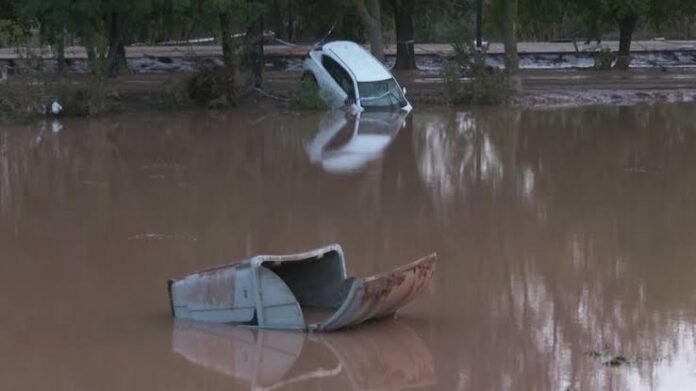ISLAMABAD: Pakistan has received a fresh flood alert from India, warning of high flood levels in the Sutlej and Tawi rivers, raising new concerns for already inundated regions of Punjab and the downstream areas of Sindh, where monsoon rains and glacial melt have already caused widespread devastation.
According to an official communication shared by the Pakistan Commissioner for Indus Waters, India’s High Commission in Islamabad informed Pakistani authorities at 8:00 am on Wednesday that high flood flows have been recorded in the Sutlej (at Harike and Ferozepur) and in the Tawi river (Jammu). The alert was immediately circulated to the federal and provincial governments, the NDMA, IRSA, irrigation departments, and army engineering corps to prepare for potential emergencies.
Punjab already under stress
The new alert comes at a time when South Punjab is still battling floodwaters caused by weeks of torrential rains and upstream releases. Several districts, including Bahawalnagar, Kasur, Vehari, and Okara, remain badly affected as the Sutlej river continues to swell, breaching embankments in multiple locations.
Thousands of families have been displaced, while crops spread over tens of thousands of acres have been destroyed. Rescue teams are working to evacuate stranded people, but officials admit that continuous high flows in the Sutlej have made the situation precarious.
Sindh on edge
Authorities in Sindh fear that as the Sutlej floodwaters move downstream, low-lying areas of Ghotki, Sukkur, and Khairpur could come under serious threat in the coming days. Sindh’s irrigation department has been directed to remain on high alert, and protective bunds are being reinforced.
Wider flood devastation in Pakistan
This year’s monsoon has already wreaked havoc across Pakistan. Gilgit-Baltistan and Khyber Pakhtunkhwa witnessed multiple cloudbursts and glacial lake outburst floods (GLOFs), while in Balochistan, flash floods washed away roads and small dams. The NDMA confirmed that dozens of lives have been lost nationwide, with hundreds of villages submerged and infrastructure severely damaged.
In Punjab alone, local officials estimate that more than 50,000 people have been affected in recent weeks, with thousands of homes partially or completely destroyed. Relief camps have been established in flood-hit districts, but access remains difficult in many areas.
Preparedness and warnings
Following the Indian alert, the NDMA has instructed provincial disaster management authorities to strengthen monitoring of rivers and nullahs. The Army’s engineering corps in Lahore and Gujranwala have also been placed on standby for emergency operations.
Experts warn that given the scale of flooding, there could be a sharp rise in demand for construction materials such as cement and steel in the coming months, as rebuilding of homes, bridges, and protective embankments gets underway. However, they also caution that prices of these materials could increase if demand outpaces supply.
Officials say that while the alert from India has allowed Pakistan some time to prepare, the risk of further devastation cannot be ruled out. “With the Sutlej already in high flood and monsoon rains continuing, the next 10 days will be critical,” one senior irrigation official told this correspondent.
For thousands of families in Punjab and Sindh, the fear now is whether the fragile embankments and relief efforts can hold back another surge of water.




